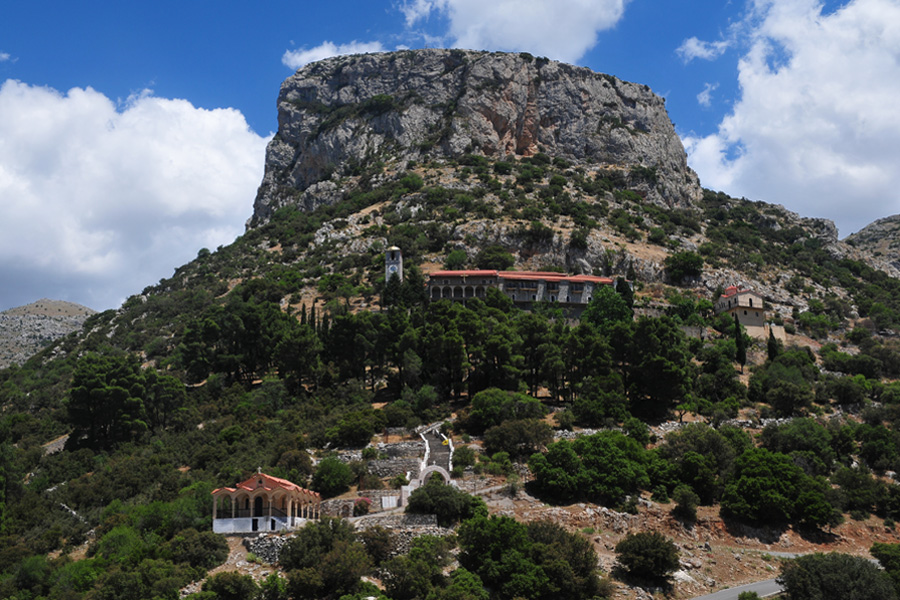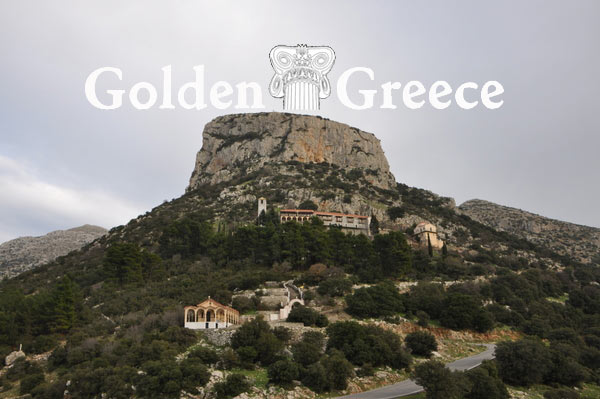History of Nestani Village
Introduction
Nestani, a picturesque village in Arcadia, Greece, is nestled at the foot of Mount Artemision, approximately 15 kilometers northeast of Tripolis. As the first village in Arcadia along the National Highway (E65) from Athens, it lies about five kilometers from the Artemision Tunnel. Known for its traditional architecture, vibrant cultural traditions, and significant historical sites, Nestani offers a window into the rich heritage of the Peloponnese.
Name and Etymology
Nestani, known as Tsipiana until 1927, likely derives its name from the ancient settlement of Nestane, as documented by the Greek geographer Pausanias in the 2nd century AD. Local tradition suggests that "Nestani" comes from the Ancient Greek word "nostos," meaning "a return home," reflecting the village’s role as a homeland for emigrants. The earlier name, Tsipiana, may stem from the Byzantine term "Kepiana," meaning gardens, or influences tied to viticulture. The name change in 1927 was part of a Greek government initiative to remove foreign connotations from place names.
Village Description
Nestani is characterized by its amphitheatrical layout at the base of Mount Artemision, with traditional stone-built houses and a central square adorned with cafes, kiosks, and large plane trees. The square serves as a social hub, reflecting the village's community spirit. At the upper end of the village stands the Metropolitan Church of the Annunciation of the Virgin Mary, a beautifully painted structure that adds to Nestani's architectural charm. The conical Goula hill (Goulas) dominates the skyline, towers over the village, offering panoramic views and hosting the revered Monastery of Gorgoepikoos.
Historical and Cultural Sites
- Ancient Period: Nestani is associated with the ancient town of Nestane, a deme (district) of Ancient Mantineia, flourishing from the 5th to 3rd century BC. Archaeological evidence includes Pelasgian walls and a tower at the acropolis, with remnants still visible today. Pausanias notes that Philip II of Macedon camped near Nestane in 338 BC, leaving behind a fountain known as Philippios Krini .
- Byzantine and Frankish Periods: During the Middle Ages, a settlement named Tsipiana or Kipiana existed on Goula hill. After residents relocated to the modern village site, the Franks fortified the Goula site in the 13th century, possibly after 1296, establishing a short-lived headquarters.
- Venetian and Ottoman Periods: Local history indicates a settlement on Mount Artemision at a location called Malevo, where some residents lived permanently until the Ottoman departure, while others used it seasonally for safety.
- Fountain of Philip: A well-preserved fountain attributed to Philip II of Macedon, built during his 338 BC campaign.
- Ancient Nestani Acropolis: Located on a small hill, it features Pelasgian walls and a tower from the 5th century BC.
- Church of St. John the Thermologou: Situated on Stohos hill, linked to local beliefs about curing malaria fever.
- Fortress of Goula: Minimal remains of a Byzantine fortress, possibly fortified by the Franks.
- Monastery of Gorgoepikoos: Founded around 1080 AD, with its current structure dating to 1740, this monastery on Goula hill is dedicated to the Dormition of the Virgin Mary, celebrated on August 15 (Greek Travel Pages: Monastery of Gorgoepekoos).
Municipality and Economy
Nestani was the seat of the former Municipality of Mantineia, now integrated into the municipality of Tripoli following the 2011 local government reform. Agriculture is the backbone of Mantineia's economy, producing cereals, vegetables, apples, honey, potatoes, pears, grapes, and livestock products. The region is particularly renowned for its Moschofilero wines, which carry the Protected Designation of Origin (PDO) Mantinia label, established in 1971.
| Economic Activity | Details |
|---|---|
| Primary Industry | Agriculture |
| Key Products | Cereals, vegetables, fruits, grapes, livestock |
| Notable Product | PDO Mantinia wines (Moschofilero grape) |
| Recognition | European "Wine Tour" |
Geographical Features
TThe arable lands of Nestani lie primarily in the Argon Pedion, locally called Kambo, and Milia. The Argon Pedion, meaning "untilled plain," is prone to annual flooding due to water from surrounding mountains, sometimes forming a temporary lake. The water drains through a katavothra (sinkhole) near Nestani, flowing underground to the Argolic Gulf.
Monastery of Gorgoepikoos on Goula Hill
The Holy Monastery of Gorgoepikoos (Panagia Gorgoepikoos), perched on the slopes of Goula hill (altitude ~980m), is one of Nestani's most revered sites. Established around the 11th century (possibly 1080 AD), with the current katholikon dating to the 16th–18th centuries, it is dedicated to the Dormition of the Virgin Mary.
A famous local legend tells of the Virgin Mary intervening to stop a massive boulder from rolling down and destroying the village—leaving five finger marks (a "handprint") on the rock, still visible today. This miracle inspired deep devotion, with contributions from Nestani emigrants (especially in Chicago) funding renovations.
The monastery houses a miraculous icon of the Virgin Mary, reputedly one of the 70 painted by St. Luke the Evangelist (though likely legendary). It is celebrated on October 1 and August 15, with a major three-day festival for the Dormition attracting pilgrims. The site offers stunning views over the Nestani plain and Mount Mainalo.




Festivals and Traditions
Nestani is renowned for its vibrant festivals, particularly the St. George celebration on April 23. Participants don traditional attire, with men carrying shepherd's staffs decorated with wildflowers, and perform dances and songs at Goula hill, reflecting the village's Ottoman-era heritage.
Mythological Significance
According to Pausanias' Description of Greece (Book 8, Chapter 8), the Argon Pedion near Nestani is associated with the birth of Poseidon. The Arcadian myth recounts that Rhea, to protect Poseidon from Cronus, hid him among lambs near a spring called Lamb (Perseus: Pausanias Book 8).
Conclusion
Nestani is a village where history, culture, and nature converge. From its ancient roots as Nestane to its Byzantine and Frankish heritage, and its modern role as a hub of Mantineia's wine culture, Nestani offers a rich tapestry for visitors and historians alike.